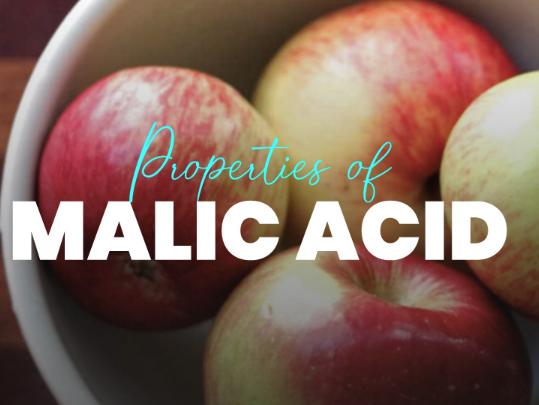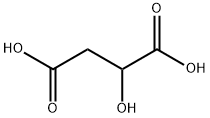Why is Malic acid used in food
May 13,2024
Description
Malic acid (MA) is an organic compound also known by the names "apple acid" and "fruit acid," and it is contained in many prepared foods. This compound is found naturally in apples, particularly in the skin and other fruits. It is a so-called alpha-hydroxy organic acid in many plant and animal species. This intermediate is the critical element of the primary cellular energy production cycle, the Krebs cycle (also known as the citric acid cycle). The chemical formula is shown below:
HOOC–CH(OH)–CH2–COOH.
The molecular formula for malic acid is C4H6O5. The iupac name of MA is 2-hydroxybutanedioic acid. As an optically active compound, this acid is classified into L-malic acid (left-handed form, found in fruits) and D-malic acid (right-handed form, does not occur in nature).
Uses

MA is used in cosmetics, such as self-tanning creams, cleansing forms, and facial creams, to adjust pH. Potentially, it can be used for metal cleaning, textile finishing, water treatment, fabric dying, and as a monomer for the synthesis of poly(β-l-malic acid).
Malic acid is often present in the food's label, but it is not dangerous or toxic to human health. Its purpose is to increase food acidity, giving more flavor, but it is also used as a flavoring substance and color stabilizer. It is identified with the acronym E296. This acidifying compound is widely used in the food industry and is generally obtained through chemical synthesis. It is normally found in fruit juices - mostly grape or apple - and in jellies, spreadable fruit, jams, wine, and some low-calorie foods. In nature, malic acid is contained in foods such as prunes, currants, tomatoes, and even bananas in small quantities. This fruit acid is closely related to acid, and a sour, bitter, strong, penetrating taste characterizes it.
Safety
Regarding safety, we should remember that the malic acid in food can irritate the eyes and skin, but it does not cause damage to health. On this point, Europe has not defined the reference values for the daily quantity ingested.
- Related articles
- Related Qustion
- Malic acid: Significance and its Quantifying Methods May 14, 2024
Malic acid, pivotal in food and industry, demands monitoring for quality. Biosensors, especially electrochemical, offer efficient solutions, overcoming traditional method limitations.
- Malic Acid: Preparation and Applications Oct 21, 2023
Malic acid is used primarily as an ingredient in hard candys and other sweets, jams, jellies, and various canned fruits and vegetables. Most countries authorize its use as an additive in foodstuffs.
- The Application of Malic acid Jun 20, 2022
Malic acid is a 2-hydroxydicarboxylic acid that is succinic acid in which one of the hydrogens attached to a carbon is replaced by a hydroxy group.
Supplementation with pyridoxal 5'-phosphate monohydrate can synthesize neurotransmitters such as dopamine and serotonin, maintaining a healthy nervous system.....
Nov 4,2025Biochemical EngineeringTriphenyl phosphite can be used as the oxidation inhibitor and the stablizer of many polymkeric substance.....
Jan 10,2025APIMalic acid
6915-15-7You may like
- Malic acid
-

- 2025-12-14
- CAS:6915-15-7
- Min. Order:
- Purity: 0.99
- Supply Ability:
- DL-Malic acid
-

- $0.00 / 25Kg/Drum
- 2025-12-13
- CAS:6915-15-7
- Min. Order: 1KG
- Purity: 98%min
- Supply Ability: 500kgs
- Malic acid
-

- $1.00 / 25KG
- 2025-12-11
- CAS:6915-15-7
- Min. Order: 1KG
- Purity: 99%
- Supply Ability: 10 mt






